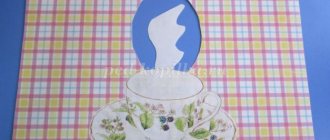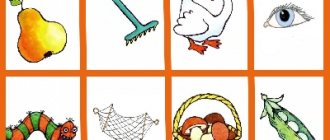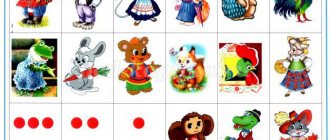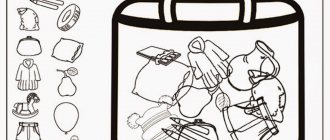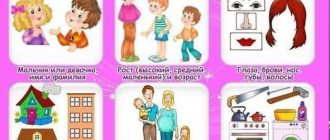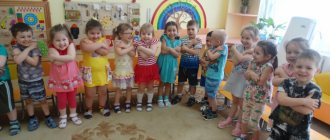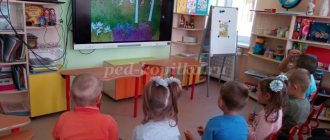Article:
To increase the effectiveness of speech correction classes for children, it is necessary to widely use speech therapy games.
This especially applies to classes with preschool children, because their main activity is play. Through speech therapy games for preschoolers, speech sounds in syllables and words are automated, and the ability to coherently express their thoughts is developed. Educational speech games for preschool children can be purchased in printed form. But many speech therapists use homemade games in their classes. Parents can also benefit from this experience.
Speech therapy games to reinforce correct pronunciation
In their classes, speech therapists use the following homemade games:
- “Release the balloons” to reinforce the correct pronunciation of the sound S. The painted balloons of different colors represent syllables with this sound. The child selects balls and pronounces forward and backward syllables. You can also stick images of objects with the sound C on the balls.
- "Autumn leaf fall." We hear the sound Ш when we sweep fallen leaves with a homemade miniature broom. On the paths drawn on cardboard there are yellow, red, brown leaves. The child imitates sweeping leaves by making a sound. Then we move on to sweeping paths with syllables and words starting with Sh.
- "Play, accordion." You can consolidate sounds in words using a homemade accordion with object pictures pasted onto any sound that was assigned to the child and which needs to be consolidated in the preschooler’s speech.
- "Magic Tree" The speech therapist draws a tree with leaves or fruits on which syllables are written or objects are depicted in the sound required for automation.
- “We are going to distant lands.” The locomotive is carrying carriages - we fix the sound Ch. Animals are riding in the carriages. By naming them, the child reinforces the correct pronunciation of the assigned sound and the composition of small sentences.
Games for distinguishing sounds in words
Do-it-yourself speech therapy games for preschoolers help teach children to distinguish sounds by ear, develop their attention, and expand their vocabulary.
- "Funny transformations of words." The famous poem by A. Shibaev “The Letter Got Lost” is well suited for this game:
They say one fisherman
I caught a shoe in the river,
But then he
A crowbar caught the hook!
It is necessary to find the word that is lost and replace it with the appropriate one. Humorous drawings are also prepared for these quatrains.
- "Score a goal." Football goals are drawn on paper, the bars represent the letters M and L. In the images of footballs, the vowels I, Y, O, E, I, A. We score a goal and form the words: mil, soap, mole, chalk, crumpled, small. You can play the game by reading these words:
- If you use a barbell to make an M, if you use a barbell to make an L, and score an I into the goal, it will be... The child names the resulting word. So all the letter-balls fall into the goal.
- "Rebus". Solving puzzles develops a child's logic, thinking and speech. You can draw the puzzles yourself by encoding in them any word or tongue twister that uses the sound assigned to the child.
- "Replacement of sound." The speech therapist has a picture with a drawn object, he asks to replace the initial sound in the word. Barrel - daughter, point, hummock, night. You can replace sounds in other parts of the word. Goat - leather, bark, braid.
- "The Hidden Word" Show subject pictures. The child names what is shown. In every word there is another one that is hidden from us. The speech therapist asks: “Can you find the word that is hidden?” A duck is a dot, a scythe is a wasp, a shelf is a floor, a pillar is a table, a wolf is an ox.
- Lotto and Domino games can be made together with children. Select and paste subject pictures onto cardboard. The preschooler pronounces the names of the objects shown on the cards.
These do-it-yourself speech therapy games are used to develop the ability to generalize, analyze, and teach you to be attentive.
Homemade didactic game for automating sounds “Adventure Road”
Goal: consolidation and refinement of the skill of correct pronunciation of previously learned sounds.
Objectives: development of auditory and visual attention, perception; development of visual-motor coordination, orientation in space; vocabulary expansion
Materials: a large empty candy box, cut out pictures from old postcards and magazines, pictures with attached sound.
Homemade didactic game for automating sounds
Description of work with the manual:
The child is invited to go on a trip. Along the way, he will open magic doors and complete tasks. If everything is done correctly, then at the end of the journey he will receive a small surprise.
At the end of the trip the child receives a small prize
For example, to automate the sound “r” you can take a small machine. Drive along the road, imitating the sound of a rrrrrrrrrr engine, drive up to the door, open it and say the names of the pictures. Behind the last door the child finds a surprise - it could be candy, a picture, etc.
Theatrical play activity of children during classes with a speech therapist
Speech therapy classes for children are not complete without the use of elements of theatrical play activities for preschoolers. You can make figurines for the theater yourself. This could be a finger theater. Masks of fairy-tale characters are made from paper, they are put on the finger, and the performance is performed. In the tabletop theater, fairy-tale characters made of cardboard are inserted into spools of thread. The shadow theater is also interesting. It requires a small white backlit screen and black action figures.
You and your children can come up with your own unusual fairy tales, where the heroes can be vegetables, fruits, and household items. Small theatrical performances bring joy, develop children’s imagination, strengthen memory, and make speech varied and correct.
Speech therapy games for children play a major role in the development of correct pronunciation in preschoolers.
Do-it-yourself multifunctional speech therapy manual “House with Games”
Structural unit "Kindergarten "Rainbow" combined type" MBDOU "Kindergarten No. 11 combined type"
Ruzaevsky municipal district
"House of Games"
(do-it-yourself multifunctional speech therapy aid)
Kulakova O. V.
Teacher speech therapist
Ruzaevka 2021
Relevance.
Possession of competent speech and the ability to express one’s thoughts are necessary skills for future schoolchildren, the basis for their successful studies. An important point in preparing for school is the choice of teaching methods. The most effective method is the use of didactic, educational games, as one of the forms of educational influence of an adult on a child and at the same time, the main activity of a preschooler. Thus, a didactic game has two goals: one of them is educational, which is pursued by the teacher, and the other is playful, for which the child acts. It is necessary that these goals complement each other and ensure speech improvement.
I work in a kindergarten as a speech therapist with children with speech disorders. In my work I use various games and manuals that I make myself. I like multifunctional manuals, so I made a manual with which you can solve several problems at once. Manual " House with games "
mobile and easy to use. It has an attractive appearance and makes it interesting to play with it many times.
Description:
This teaching aid is made of wood, made in the form of a “house”. The walls of the “house” are removable and fastened with Velcro. The manual comes with various materials that can be conveniently placed inside the “house.”
The purpose of the multifunctional teaching aid:
Comprehensive development of speech in preschool children.
This manual helps solve many problems: develop the ability to classify, find unnecessary things, enrich vocabulary, develop speech, develop logical thinking, develop attention, memory, automate sounds, conduct speech therapy examinations, etc. Let's take a closer look at the games with this guide:
"Sun"
Target:
creating game motivation when performing articulation exercises.
“Geometric Shapes”
-
Teaching and introducing a child to geometric shapes is not only important, but also very interesting! It is necessary to show imagination, come up with games and tasks for children. For example, “Sorter” is one of the first educational toys for a child, allowing him to learn about the properties of different shapes. Its essence lies in the fact that for a certain hole you need to select a toy of the appropriate shape (ball, cube, etc.). The child very quickly begins to understand what’s what; such a toy not only teaches the child to quickly distinguish between figures of different geometric shapes, but also trains fine motor skills of the fingers, and also develops logical thinking.
"Mood Board"
- completed at the beginning and end of any lesson. Here the guys reflect their mood in the form of a pictogram.
- Target:
Learn to recognize and convey emotional manifestations using facial expressions.
- Enrich children's vocabulary with words denoting different emotions and feelings.
- Cultivate respect for each other.
"Flanelegraph"
What games can you come up with with flannelgraph? Here the scope of imagination is unlimited. With flannelgraph we study colors, shapes, sizes, numbers, learn to read, group, compare, organize various theaters and much more. And most importantly:
- Formation of children's ability to self-learn.
- Development of skills not only to technically perform a role, but also to convey one’s attitude towards it.
But the children’s favorite pastime is to hang and remove pictures from the flannelgraph on their own, according to their own scenario, and do this repeatedly.
"Shadow Theater"
- a very amazing and spectacular form of theatrical art. Shadow performances in which various animals and people are depicted using palms are widely known. This technique can be safely used in shadow theater. With the help of the theater we actively support children’s desire for beauty. We try to involve children in an interesting and creative process, where they liberate themselves and reveal themselves as little artists.
"Choose by color"
Target:
- stimulate and support the desire to independently acquire knowledge in the process of available activities
- develop an interest in the mathematical side.
- promote the manifestation and development of specific elements of mathematical abilities
- arouse interest in school and social readiness for it
- cultivate a desire to learn new things.
"Magnetic board"
Target:
creating conditions for children to become familiar with the properties of a magnet. Development of creative activity, imagination, cognitive abilities.
"Karaoke"
In speech therapy classes I use the experience and achievements of a music director. After articulatory gymnastics, I conduct a musical warm-up to repeat the correct pronunciation of the automated sound and prepare children for more complex speech material. For this I use pictures of musical instruments or the instruments themselves (both real and dummies). Children sing syllables (open, closed, with consonants, forward, backward) to a simple melody, pretending to play these instruments. If real instruments are used in class, we sing and play. During such a warm-up, children sing quietly and loudly, slowly and quickly, smoothly and abruptly, in chorus and individually, in an “orchestra” (everyone sings, but everyone sings their own syllable). The tasks depend on the individual characteristics of the child. Instruments and speech material change.
"Cobweb"
With the help of an elastic band, the children create various types and shapes of cobwebs.
Target
of this game: development of imagination, acquisition of skills for independent gaming, independent gaming activities and communication.
"Time"
Already at preschool age, it is vitally important for children to learn how to navigate time: to determine, measure time (correctly denoting it in speech), feel its duration (in order to regulate and plan activities in time), change the pace and rhythm of their actions depending on the availability of time. The ability to regulate and plan activities over time creates the basis for the development of such personality qualities as organization, composure, focus, precision, which are necessary for a child when studying at school and in everyday life.
Target:
Development of time concepts in older preschoolers.
"Magic Muff"
With this game, kids can greet each other by putting their hands through the holes on both sides and finding the other hand to shake. You can also play the game “Wonderful Bag”.
"Geocont"
"Geokont" is an original game aimed at the logical and mathematical development of preschool children, introducing them to the objective world, developing skills in design and solving creative problems
Target:
- mastering the names and structure of geometric shapes, their size;
- develop the ability to build symmetrical and asymmetrical figures, patterns, and navigate in space; distinguishing the colors of the rainbow;
- develop the ability to construct figures according to a diagram, picture, verbal algorithm and your own design; attention, memory, elements of logical thinking; imagination, creativity; finger and hand motor skills.
- We form children’s ability to self-learn, also interest in school, social readiness for it
- We develop the ability not only to technically play the role of a student, but also to convey our attitude towards it;
- promote the development of imagination, creative manifestations of children, interest in participating in gaming and artistic activities with elements of creativity, joy, from the realization of their plans and desires.
How to play.
The game is placed on the board. The child pulls elastic bands onto nails and creates object silhouettes, geometric shapes, patterns, numbers, letters according to the model, verbal algorithm and his own design. With one game you can solve a large number of educational problems. Unnoticed by yourself, the baby masters numbers and letters; recognizes and remembers color, shape; trains fine motor skills of the hands; improves speech, thinking, attention, memory, imagination. Universality in relation to educational programs.
“We are artists, creators!”
Target:
- stimulate and support the desire to independently acquire knowledge in the process of available activities
- develop interest in visual arts, including joint ones, maintain interest in its specific types
- develop children's visual abilities and talents
- to contribute to the enrichment of children’s visual experience in creating an artistic image at a level accessible to them
- develop creative activity, imagination, cognitive abilities through the use of fine arts
- arouse interest in school and social readiness for it
- cultivate the desire to fantasize and draw what you have imagined on a piece of paper
“My fingers are my assistants”
- Lacing "Carnation"
- "Labyrinth"
- Tactile board “Kind palms”
- "Multi-colored corks"
Target:
- develop the child's imagination,
- attention, fine motor skills and coordination of movements,
- develop children's interest in cooperation, skills of verbal and active communication with adults and peers, enrich the experience of “playful communication”
- contribute to the development of imagination, creative manifestations of children, interest in participating in gaming and artistic activities with elements of creativity, joy, from the realization of their plans and desires.
- form children's ability to self-learn.
- develop the ability not only to technically perform a role, but also to convey their attitude towards it;
- foster a desire to help, empathize with the character and show concern for them and others. To foster a friendly attitude in children towards their surroundings, emotional responsiveness to the state of other people, and good feelings.
The ideas for multifunctional aids are not limitless. The content of games can be varied (everything will depend on the teacher, his imagination and the tasks solved in the games). These can be games for the development of: fine motor skills, logical thinking, coherent speech, as well as games for automation and differentiation of various sounds.
